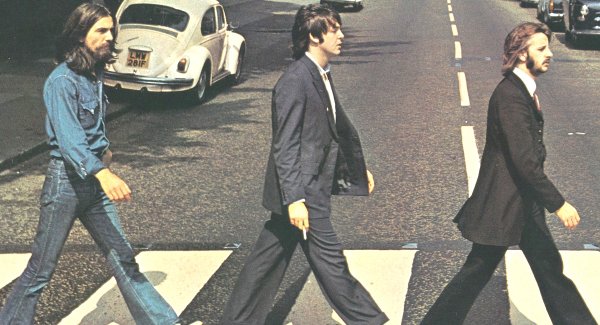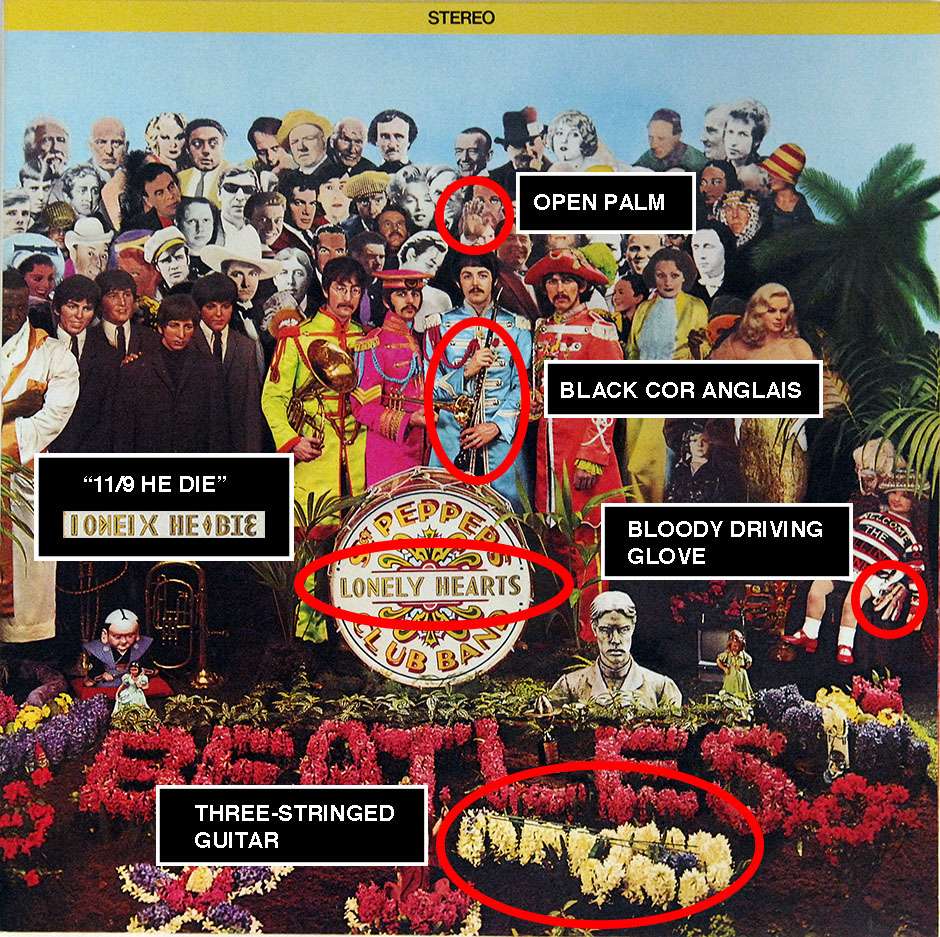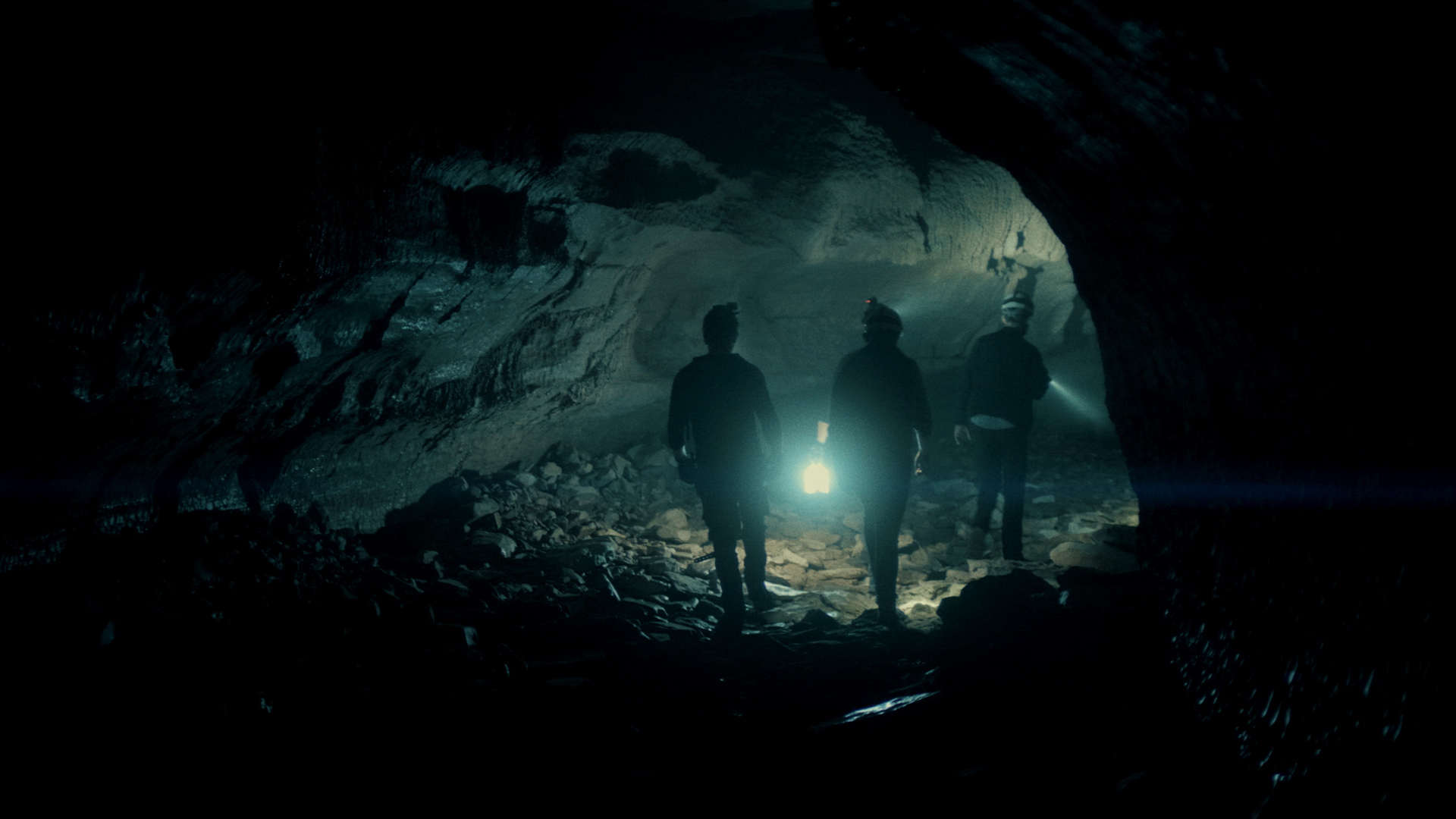
50 Years Ago – Was Crowley Behind The ‘Paul Is Dead’ Hoax?
- April 18, 2019
- 0
by Andrew Arnett
Aleister Crowley’s penchant for photobombing the world’s greatest conspiracies has been discussed by us in previous articles but, in the present case, the analogy can be taken quite literally – Crowley’s mug is planted squarely on the Beatles’ Sgt. Pepper’s Lonely Hearts Club Band album cover, arguably the most iconic image in pop culture. Our present focus relates to Crowley’s involvement in the “Paul is Dead” conspiracy and, more generally, The Beatles as a whole. The Fab Four are the cornerstone of modern day pop culture, which for some, makes them inextricably linked with nefarious workings of the Establishment. As we shall find, Mr. Crowley has managed to worm his way into the center of this, alleged, rotten apple. But, as is the case with all things “conspiracy,” a vast gulf lies between what is real and what is indulgent fantasy of the tin foil hatted community.
 50 years ago, in the summer of 1969, rumors of Paul McCartney’s death began circulating like wildfire on college campuses across the United States. To wit, Paul was killed in a car crash on the M1 motorway on September 11, 1966, and was secretly replaced by a look-alike double to keep the money rolling in for band and country. The band, however, felt obliged to leave hints attesting to the fact, to appease their own guilty conscience. On September 17, 1969, Des Moines’ Drake Times-Delphic published the first known article on the subject. The article, titled “Is Beatles’ Paul McCartney Dead?” listed some of the hidden clues and messages to be found on Beatles records which hinted at Paul’s demise, like, a voice uttering “Turn me on, dead man,” whilst “Revolution 9” was played backwards.
50 years ago, in the summer of 1969, rumors of Paul McCartney’s death began circulating like wildfire on college campuses across the United States. To wit, Paul was killed in a car crash on the M1 motorway on September 11, 1966, and was secretly replaced by a look-alike double to keep the money rolling in for band and country. The band, however, felt obliged to leave hints attesting to the fact, to appease their own guilty conscience. On September 17, 1969, Des Moines’ Drake Times-Delphic published the first known article on the subject. The article, titled “Is Beatles’ Paul McCartney Dead?” listed some of the hidden clues and messages to be found on Beatles records which hinted at Paul’s demise, like, a voice uttering “Turn me on, dead man,” whilst “Revolution 9” was played backwards.
Radio station disc jockeys spread the message and soon, main stream media got hold of the story, pushing The Beatles for comment. Ringo told the press, “If people are gonna believe it, they’re gonna believe it. I can only say it’s not true.” Lennon, for his part, simply said the rumors were “insane.” A CBS News crew secretly filmed McCartney working on his farm in Scotland, followed by a pair from Life magazine. Paul busted the reporters skulking on his property but relented to an interview, telling them:
“Perhaps the rumor started because I haven’t been much in the press lately. I have done enough press for a lifetime, and I don’t have anything to say these days. I am happy to be with my family and I will work when I work. I was switched on for ten years and I never switched off. Now I am switching off whenever I can. I would rather be a little less famous these days.”
After the Life cover story, the “Paul is Dead” rumors began to die down, but they never really went away. Today, 50 years after the death “hoax” started, McCartney is back on top of the charts. His newly released album Egypt Station went straight to number one on the Billboard 200 and, he is embarking on a worldwide tour. Rumors of his premature demise are also back in full swing. Numerous books, YouTube videos and blogs pay slavish devotion to analyzing every detail of the conspiracy, sensing something sinister lurking behind the “cute” Beatle. Maybe, that sinister something has a name – Aleister Crowley. Crowley was a British poet, painter, novelist, occultist and prophet of the New Aeon. He died shortly after any of the Beatles were born so, how could the “Wickedest Man in the World” be pulling the strings of the worlds greatest band? Let’s begin the investigation with the name itself.
It Was 20 Years Ago Today
The Beatles, it seems, have always been shrouded in mystery. This goes for the origins of the band name. “Beatle” is a clever pun, imbued with various permutations of meaning. How did it come to be? John Lennon claimed that he and Stu Sutcliffe came up with the name, in a nod to Buddy Holly and The Crickets. John said in a 1964 interview: “It was beat and beetles and when you said it, people thought of crawly things, and when you read it, it was beat music.” On another occasion, however, John stated, “It came in a vision- a man appeared on a flaming pie and said unto them ‘from this day on you are Beatles with an ‘A’.”
Some researchers however, claim there is more to the name than meets the eye. They reference a poetry collection by Aleister Crowley, published in 1910, entitled The Winged Beetle, which includes occult themed poems like The Wizard Way, The Octopus, The Two Secrets and The Wings. They note that Paul, after the break up of The Beatles, went on to form the band Wings. Is Paul the “Winged Beetle” and were the Beatles acolytes of Crowley’s system of Magick, with a “K”?
It is not unusual to find rock stars openly professing their admiration for Crowley (i.e. Jimmy Page, David Bowie, Ozzy Osbourne, etc.). As we’ve mentioned, Crowley is on the cover of Sgt. Pepper. One rumor states that “Sgt. Pepper” was in fact a reference to Crowley himself. The opening lyrics to the album are, “It was 20 years ago today, when Sgt. Pepper taught the band to play.” That album came out on the 20th anniversary of Crowley’s death. Is the band hinting they are disciples of the Great Beast 666? Crowley’s axiom is, “Do what thou whilst is the whole of the Law,” and “Love is the Law, love under will.”
John Lennon, in an interview with Playboy, states, “The whole Beatle idea was to do what you want, right? To take your own responsibility, do what you want and try not to harm other people, right? Do what thou whilst, as long as it doesn’t hurt somebody.”
What kind of influence did Crowley have over the Beatles? Consider the band’s innovation in the field of backmasking, a recording technique where a sound or message is recorded backwards to be played forward. The first time such a thing was accomplished was in 1966, during the Beatles recording of the Revolver album. In
Magick in Theory and Practice, Crowley instructed the Adept to do the following:
(“a”) Let him learn to write backwards, with either hand.
(“b”) Let him learn to walk backwards.
(“c”) Let him constantly watch, if convenient, cinematograph films, and listen to phonograph records, reversed, and let him so accustom himself to these that they appear natural, and appreciable as a whole.
(“d”) Let him practice speaking backwards; thus for “I am He” let him say, “Eh ma I”.
(“e”) Let him learn to read backwards. In this it is difficult to avoid cheating one’s self, as an expert reader sees a sentence at a glance. Let his disciple read aloud to him backwards, slowly at first, then more quickly.
(“f”) Of his own ingenium, let him devise other methods.
In addition to their innovation in the studio, Crowley may have influenced the band’s lifestyle, most evident during their post 1965 “experimental” phase. Crowley was a notorious drug addict, indulging in alcohol, heroin, cocaine and psychedelic drugs. Coupled with his libertine views on sexuality, Crowley could be viewed as the quintessential rock star, decades before such creatures roamed the earth. The Beatles, of course, encompassed all the cliches of rock stardom, for good and ill.
I Buried Paul
Crowley understood the significance and sacred symbolism behind the beetle. In Egyptian mythology, the scarab, or dung beetle, was believed to be the incarnation of the beetle-headed god Khepera, who ruled over resurrection and fertility, symbolic of the rising sun, rebirth and creation. Synchronistically, if not consciously, The Beatles would carry the mandate of Khepera and become the sun center of our musical universe.
The scarab beetle may also hold the key to the ‘Paul is Dead’ mystery. This small insect is associated with Egyptian gods by its curious habit of rolling dung, from east to west, into a ball, into which it lays its eggs. When hatched, the dung provides its young with food.
This process of transforming the dead matter of dung into renewed life represents initiation in the Egyptian mysteries. Paul’s “death,” rather than being literal, should be interpreted as symbolic of initiation. The candidate for initiation represents Osiris, who was murdered by his brother Set. Osiris’ consort Isis reassembles his body then gives birth to the resurrected god Horus, thus completing the cycle of death and rebirth.
It is possible The Beatles were preparing us for Paul’s symbolic death even before he was “officially pronounced dead.” One such death clue appears on the cover of the album Yesterday And Today, released in June of 1966. Here we have three Beatles gathered around an open trunk, and sitting inside is Paul. Paul buried in his coffin, get it? I’m sure you’re getting the hang of this.
The Beatles however, may have been dropping ‘Paul is Dead’ clues a year before that. Let’s go back to 1965, and take a look at the cover of The Beatles fifth studio album, Help! Robert Freeman, who photographed the cover, explains, “I had the idea of semaphore spelling out the letters ‘HELP’. But when we came to do the shot, the arrangement of the arms with those letters didn’t look good. So we decided to improvise and ended up with the best graphic positioning of the arms.”
In semaphore, The Beatles are spelling out the letters N-U-J-V. Basically, gibberish. But what if the band were not using semaphore but rather, a totally different system? Crowley’s Liber O vel Manus et Sagittae sub figurâ VI contains images of a hooded figure in a Tau robe posing in various positions. Each of these positions convey a different meaning, all of which relate to Egyptian mysticism.
In a video appearing on the YouTube channel “iamaphoney,” these pictures are superimposed over the cover of Help! It’s pretty much a perfect match. Ringo’s arm position, for instance, spells out ‘Osiris risen.’
If you think these concepts are a little far-fetched, understand that the occult was a big deal in 1966, as it was with The Beatles themselves. This is evident on their 1966 masterpiece, Revolver, who’s working titles included Abracadabra, Magic Circle and Four Sides of the Circle.
The word Abracadabra plays a major role in Crowley’s philosophy, as he describes in The Book of the Law, as “the Word of the Aeon,” meaning the Great Work accomplished and the all important “attainment of the Knowledge and Conversation of one’s Holy Guardian Angel.” In addition, the word represents the uniting of the Microcosm with the Macrocosm.
Egypt Station
Egypt Station (2018) is McCartney’s latest album and his first No.1 album since Tug of War (1982). The record’s title and cover art, featuring pyramids, the sun, sunflowers, a ram and, notably, a scarab beetle, comes from a lithograph McCartney made back in the 1980s. According to McCartney, “My original inspiration was similar to a picture we were talking about the other day, with Egyptian symbols and shapes I got from looking at a reference book on Egypt. I was interested in the way they drew sunflowers, so two appear on the left and on the right.”
As for the music, McCartney says, “Egypt Station starts off at the station on the first song and then each song is like a different station. So it gave us some idea to base all the songs around that. I think of it as a dream location that the music emanates from.”
Hearing his description of the album, I can’t help but think of David Bowie’s own Station to Station album, a record that is itself imbued with strong Crowleyan overtones and occult symbology. Bowie references the Cabalistic Tree of Life in his song Station to Station, singing, “Here are we, one magical movement from Kether to Malkuth.”
On Hunky Dory’s ‘Quicksand,’ Bowie pays homage to the Great Beast with the lyrics, “I’m closer to the Golden Dawn Immersed in Crowley’s uniform of imagery. But what is beyond?”
It is unclear whether or not McCartney is referencing Bowie with his latest record, but his former collaborator, John Lennon, was an admirer of Bowie, and composed with Bowie the song “Fame.” Lennon was, of course, McCartney’s accomplice in the great ‘Paul is Dead’ hoax. He was, after all, the one who uttered “I buried Paul.” Or was it “Cranberry sauce?”
There is a good chance we may never know for sure. We do know, however, that Lennon had a great interest in ancient Egyptian philosophy and artifacts, enthusiastically taking a trip to Egypt in 1977 with Yoko Ono and participating in archeological digs. John and Yoko had acquired a “serious” collection of ancient Egyptian artifacts. Commenting on these artifacts, Yoko states in the book Lennon in America: 1971-1980:
“To make money, you have to spend money. But if you are going to make money, you have to make it with love. I love Egyptian art. I make sure to get all the Egyptian things, not for their value but for their magic power. Each piece has a certain magic power.”
Ultimately, it should come as no surprise that The Beatles may have had strong leanings towards the occult. Many of the great musicians of all times, like Mozart and Beethoven, had similar interests. And certainly, Lennon and McCartney are the musical geniuses of our times. Of course, if it turns out that Crowley was the secret hand behind The Beatles then, that would change our impression of them as being clean-cut pop stars and, move them more in the territory of, let’s say, the satanic Rolling Stones.
References
https://www.ancient.eu/article/1011/ancient-egyptian-symbols/
We’ll Sing it Man – We’ll Be Reversed –Learning to ‘think backwards’–
https://hermetic.com/metadata/crowley/libers/lib6#liber-o-vel-manus-et-sagittae-sub-figura-vi
https://www.ancient.eu/article/1011/ancient-egyptian-symbols/
https://theoccultbeatles.wordpress.com
https://www.paulmccartney.com/Egypt_Station_7thSept
Turn and Face The Strange – Occultist Aleister Crowley’s Influence On Popular Music

